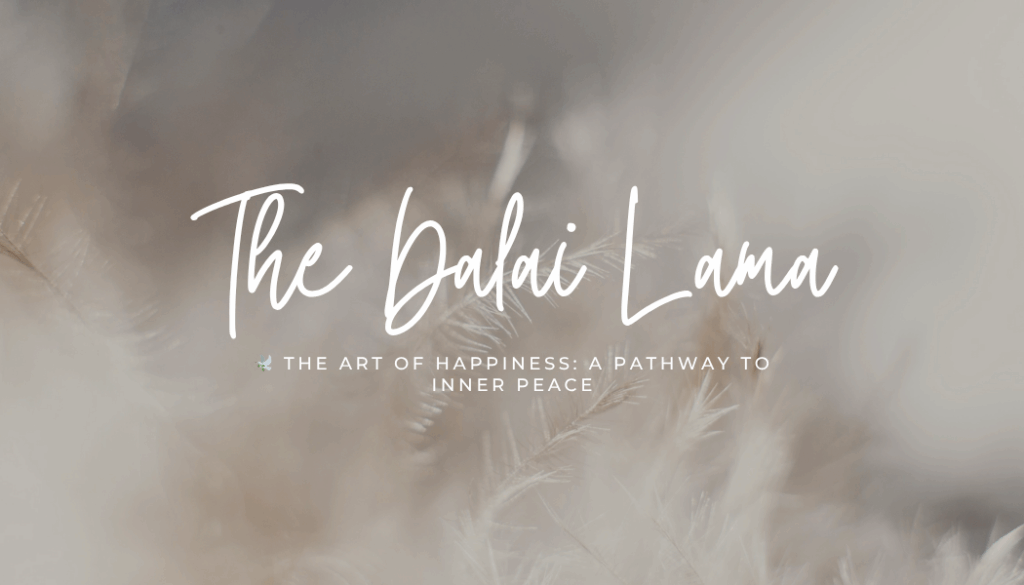In a world often dominated by external pursuits and fleeting pleasures, His Holiness the Dalai Lama, in collaboration with psychiatrist Howard Cutler, offers a profound perspective on happiness in their book, The Art of Happiness. This work delves into the essence of true contentment, emphasizing that happiness is not a mere byproduct of external circumstances but a skill cultivated through intentional practice and inner transformation.(booksinbrief.com)
🌟 Core Teachings from The Art of Happiness
1. Happiness as the Purpose of Life
The Dalai Lama posits that the fundamental purpose of life is to seek happiness. However, he distinguishes between transient pleasures and a deeper, more enduring sense of joy rooted in inner peace, compassion, and understanding. This form of happiness is not contingent upon external achievements but arises from how we train our minds and hearts .(Wikipedia, Buddhism Way)
2. Training the Mind for Happiness
Just as physical fitness requires regular exercise, mental well-being demands consistent effort. The Dalai Lama emphasizes the importance of cultivating positive mental habits such as gratitude, kindness, and patience. Through practices like meditation and mindfulness, individuals can reshape their thought patterns, leading to a more peaceful and joyful existence .(Buddhism Way)
3. The Power of Compassion
Compassion is central to the Dalai Lama’s teachings. He asserts that genuine concern for the suffering of others not only alleviates their pain but also enhances our own happiness. By extending compassion, we foster deeper connections, reduce feelings of isolation, and experience a profound sense of fulfillment .(Buddhism Way, booksinbrief.com)
4. Transforming Suffering
While suffering is an inevitable part of life, the Dalai Lama suggests that our response to pain determines its impact. By viewing suffering as an opportunity for growth and understanding, individuals can transform adversity into a source of strength and wisdom .(booksinbrief.com)
5. Living with Intention
Conscious living involves being aware of our actions, motives, and desires. The Dalai Lama encourages individuals to live intentionally, making choices that align with their values and contribute to their well-being. This approach fosters ethical behavior, inner harmony, and a deeper sense of purpose .(shubhanshuinsights.com)
🧘 Practical Applications for Daily Life
To integrate the teachings of The Art of Happiness into everyday life, consider the following practices:
- Mindfulness Meditation: Dedicate time each day to sit in silence, focusing on your breath and observing your thoughts without judgment.(smmry.com)
- Gratitude Journaling: Regularly write down things you are thankful for, shifting your focus from what is lacking to the abundance in your life.
- Acts of Kindness: Engage in small, selfless acts, such as helping a neighbor or offering a compliment, to cultivate compassion and connection.
- Reframing Challenges: When faced with difficulties, reframe them as opportunities for growth and learning, rather than obstacles.
🌍 A Universal Message
While rooted in Buddhist philosophy, the principles outlined in The Art of Happiness transcend religious and cultural boundaries. The Dalai Lama’s insights offer a universal blueprint for cultivating a life of joy, peace, and fulfillment. By embracing these teachings, individuals can embark on a transformative journey toward lasting happiness.(time.com)
For those seeking a deeper understanding of these concepts, The Art of Happiness serves as a valuable resource, offering wisdom and practical guidance for living a more meaningful and joyful life.
